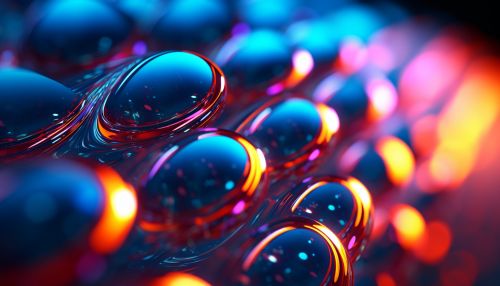Quantum Dot
Introduction
Quantum dots (QDs) are nanocrystals made of semiconductor materials that are small enough to exhibit quantum mechanical properties. Specifically, their electronic characteristics are closely related to the size and shape of the individual crystal.


Physical Properties
Quantum dots are unique in their ability to confine electrons in three dimensions, which gives rise to their extraordinary properties. They exhibit a phenomenon known as the quantum confinement effect, where the electronic properties of the material change as the size of the crystal decreases. This effect is responsible for the tunable properties of quantum dots.
Synthesis
There are several methods for synthesizing quantum dots, each with its own advantages and disadvantages. These methods include colloidal synthesis, fabrication, and viral assembly. The choice of synthesis method depends on the desired size, shape, composition, and surface properties of the quantum dots.
Applications
Quantum dots have a wide range of applications due to their unique properties. They are used in quantum computing, quantum communication, and quantum sensing. In addition, they are also used in medical imaging, solar cells, and light-emitting diodes (LEDs).
Quantum Computing
In the field of quantum computing, quantum dots are used to create quantum bits, or qubits, which are the basic units of quantum information. Quantum dots provide a way to manipulate and read out qubits in a scalable manner.
Quantum Communication
Quantum dots also play a crucial role in quantum communication. They can be used to generate single photons or entangled photon pairs, which are key resources for quantum communication protocols such as quantum cryptography and quantum teleportation.
Quantum Sensing
Quantum sensing is another field where quantum dots have found application. Quantum sensors based on quantum dots can achieve high sensitivity and precision, making them suitable for a variety of sensing tasks.
Medical Imaging
In the field of medical imaging, quantum dots are used as fluorescent probes for bioimaging. They offer several advantages over traditional fluorescent dyes, including higher brightness, longer lifetime, and resistance to photobleaching.
Solar Cells
Quantum dots are also used in the development of next-generation solar cells. Quantum dot solar cells (QDSCs) have the potential to surpass the efficiency of traditional silicon-based solar cells.
Light-Emitting Diodes
Quantum dot light-emitting diodes (QLEDs) are a type of LED that use quantum dots as the light-emitting material. They offer several advantages over traditional LEDs, including better color purity and efficiency.
Conclusion
Quantum dots are a fascinating class of materials with unique properties and a wide range of applications. Their tunable electronic properties, combined with the ability to synthesize them with precise control over size and shape, make them a versatile tool in various fields of science and technology.
